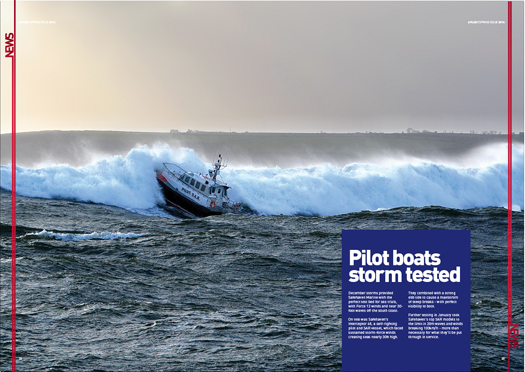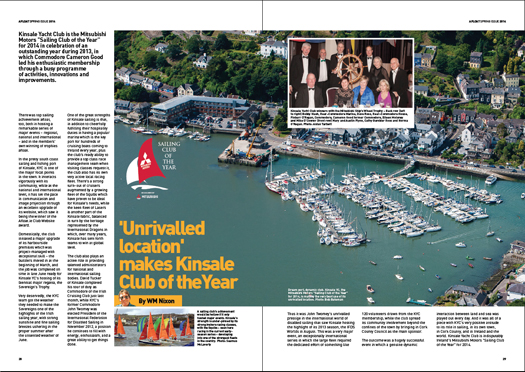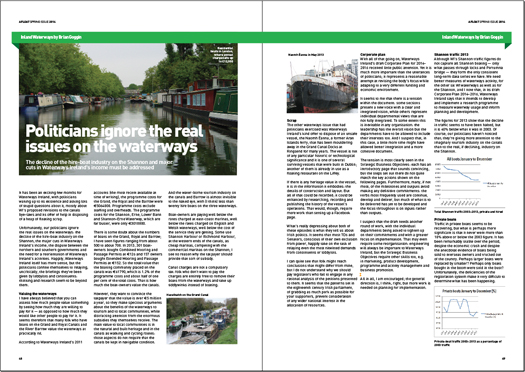Displaying items by tag: Spring Afloat
#afloatmag – Afloat's packed 64–page 2014 Spring issue hits the news stands next week (Monday, 24 March) with all the latest Irish sailing news and views.
In our latest news section, there's been a top prize for David Kenefick, and Kinsale Yacht Club too. Pilot boats are tested in the roughest seas off Cork harbour. We ask if sailing needs to chart a new course outside of the Olympics?
Also in news: Rio waters a sewer, boat reg rules imminent, Marine finance returns, Naomh Éanna's refuge, Kinsale honours Mellett, Transat for Ireland?
There's a big summer in prospect for Greystones marina plus 50 more Irish boating stories!
In features Dun Laoghaire's waterfront area and harbour is a hotbed of development and proposed projects but WM Nixon asks if the east coast port has lost the plot? W M Nixon confirms Irish hearts are still in wooden boats and with the recent lift in the economy is this the right time to bag a boating bargain?
Our cover story tells how a young Irish rookie sailor lifted Afloat's top prize. Solo sailor David Kenefick's fabulous debut season is reviewed.

Rough times – Pilot boats storm tested Safehaven boats face the biggest winter waves off Cork Harbour

Club of the Year – Kinsale Yacht Club is the Mitsubishi Motors "Sailing Club of the Year" for 2014 in celebration of an outstanding year in 2013

Keep on Cruisin' – John Leahy of the Cruising Association gives an overview of 2014's activities

Stopping the decline – Tom MacSweeney speaks with cruiser racing's Denis Kiely on what can be done to support sailing

Inland – Politicians ignore the real issues on the waterways, says Brian Goggin
Plus all our regular departments full of Irish sailing and boating news
The Irish heart is still in wooden boats
W M Nixon takes a look at some current Irish wooden boat-building projects.
Owning your dreamboat
W M Nixon suggests that now may be the best time to buy.
Classifieds
A selection of Afloat.ie's classified adverts
Dubarry Nautical Crossword
A nautical crossword with a great
boating prize
Soundings
Sean Walsh of Dun Laoghaire is the new
President of the Old Gaffers' Association
























































